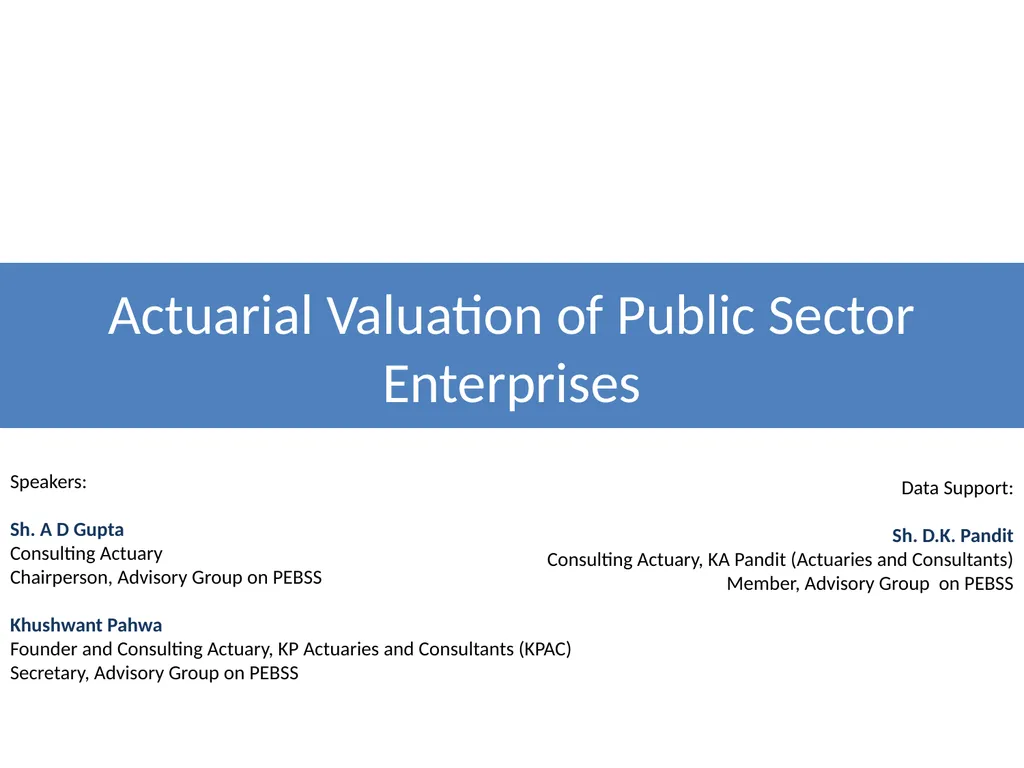
Actuarial Valuation of Public Sector Enterprises
Author: tatiana-dople | Published: 2025-06-27
Description: Actuarial Valuation of Public Sector Enterprises Speakers: Sh. A D Gupta Consulting Actuary Chairperson, Advisory Group on PEBSS Khushwant Pahwa Founder and Consulting Actuary, KP Actuaries and Consultants (KPAC) Secretary, Advisory Group
Download Presentation
Download the PPT/PDF: Download
Transcript:
Loading transcript…